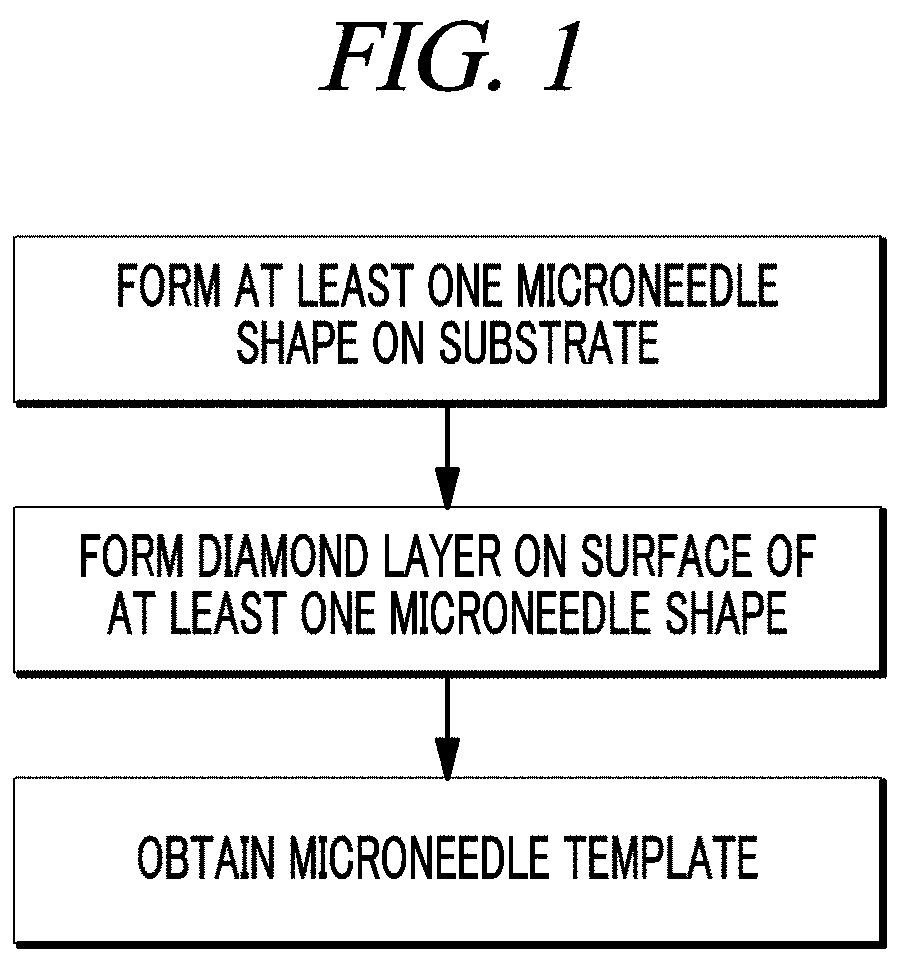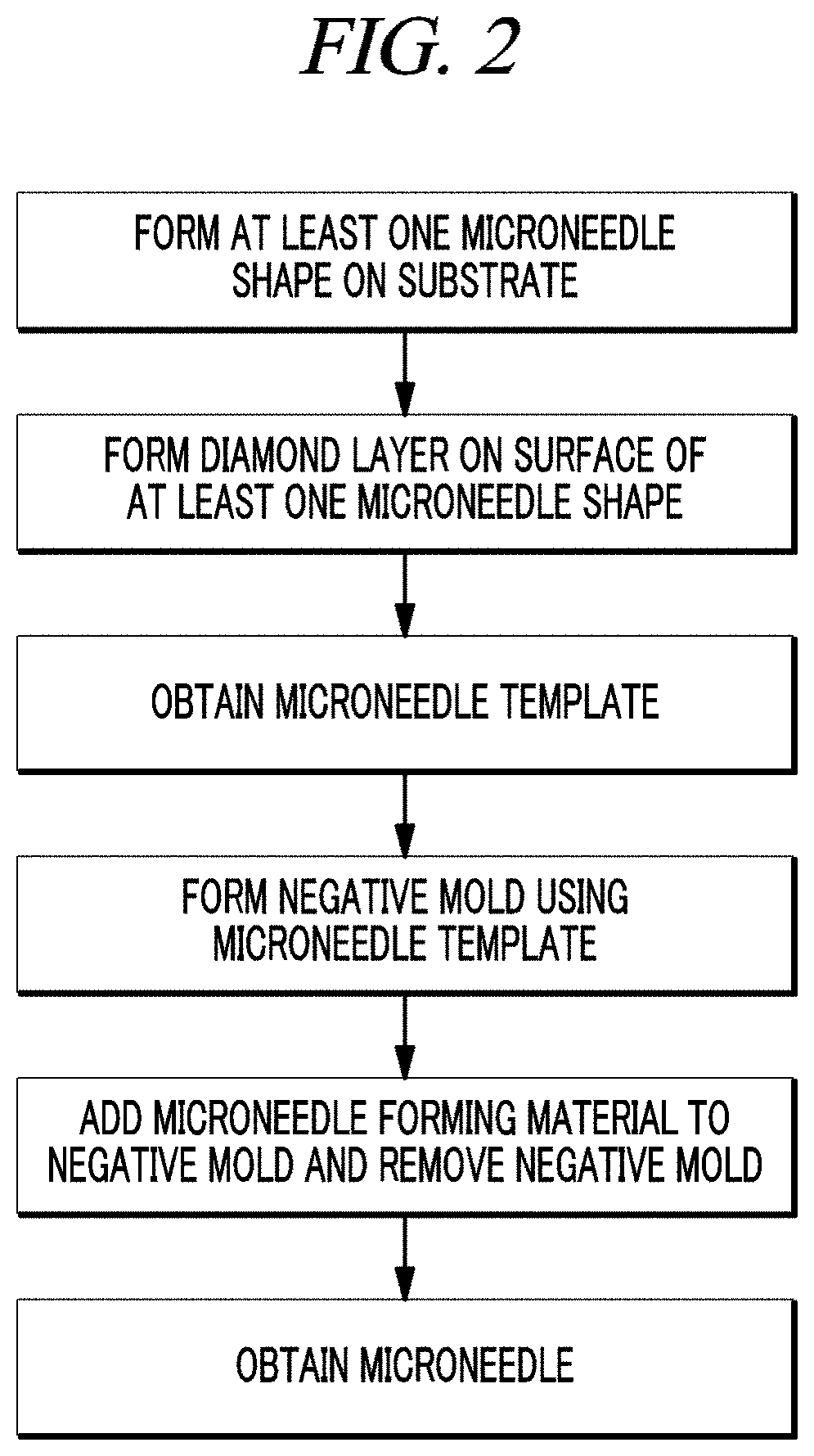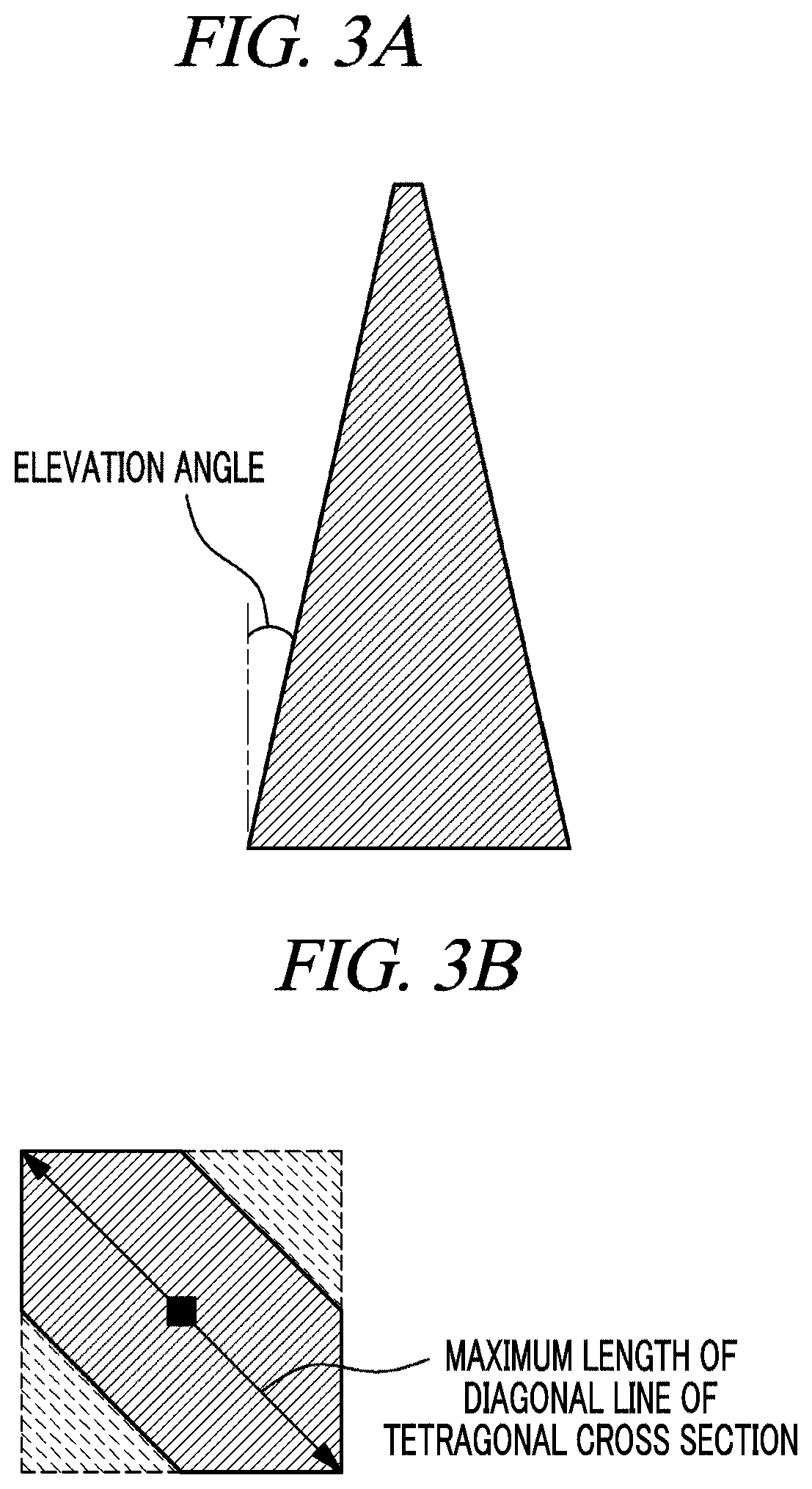Microneedle template and microneedle prepared using the same
a microneedle and template technology, applied in the field of microneedle templates, can solve the problems of needle phobia, temporary drug injection, uneven surface, weak hardness and strength, etc., and achieve the effects of high uniformity, excellent stability, and high evenness
- Summary
- Abstract
- Description
- Claims
- Application Information
AI Technical Summary
Benefits of technology
Problems solved by technology
Method used
Image
Examples
example 1
on of Microneedle Template
[0115]A tungsten carbide substrate was ground with a diamond-coated wheel to form a microneedle shape on the substrate (First grinding). After the first grinding, the cross section of the microneedle shape had a tetragonal shape only, as shown in FIGS. 5A to 5C.
[0116]Then, the microneedle shape was further ground with a diamond wheel, and thus the microneedle shape had a portion having a tetragonal cross section and a portion having a hexagonal cross section, as shown in FIGS. 6A to 6C and FIGS. 7A and 7B (Second grinding).
[0117]After the first grinding and the second grinding, a microneedle template was pre-treated to remove foreign materials from the surface and then washed to well form a diamond layer on the surface of the microneedle shape.
[0118]Then, after the first grinding and the second grinding, each microneedle template was located in a CVD coating chamber having an internal temperature of about 2,000° C., diamond was deposited to a thickness of 1...
example 2
on of Microneedle
[0119]The microneedle template according to Example 1 was applied with PDMS or silicone or immersed in PDMS or silicone to form a negative mold.
[0120]The negative mold was applied with a mixture of 5% hyaluronic acid MMW, 3% hyaluronic acid oligomer, 0.5% trehalose, and 1% collagen without blisters.
[0121]Then, the mixture was dried at 50° C. for 3 hours to form a microneedle, and the microneedle was separated from the negative mold.
[0122]The shape of the obtained microneedle was as shown in FIGS. 7A and 7B. A ratio of the length of a portion having a hexagonal cross section to the length of a portion having a tetragonal cross section of the microneedle was measured at 1:1, and a ratio of the maximum length (67 μm) of a diagonal line of the tetragonal cross section to the maximum length (351 μm) of a diagonal line of the hexagonal cross section was measured at 1:5.23.
PUM
| Property | Measurement | Unit |
|---|---|---|
| thickness | aaaaa | aaaaa |
| length | aaaaa | aaaaa |
| melting point | aaaaa | aaaaa |
Abstract
Description
Claims
Application Information
 Login to View More
Login to View More - R&D
- Intellectual Property
- Life Sciences
- Materials
- Tech Scout
- Unparalleled Data Quality
- Higher Quality Content
- 60% Fewer Hallucinations
Browse by: Latest US Patents, China's latest patents, Technical Efficacy Thesaurus, Application Domain, Technology Topic, Popular Technical Reports.
© 2025 PatSnap. All rights reserved.Legal|Privacy policy|Modern Slavery Act Transparency Statement|Sitemap|About US| Contact US: help@patsnap.com



